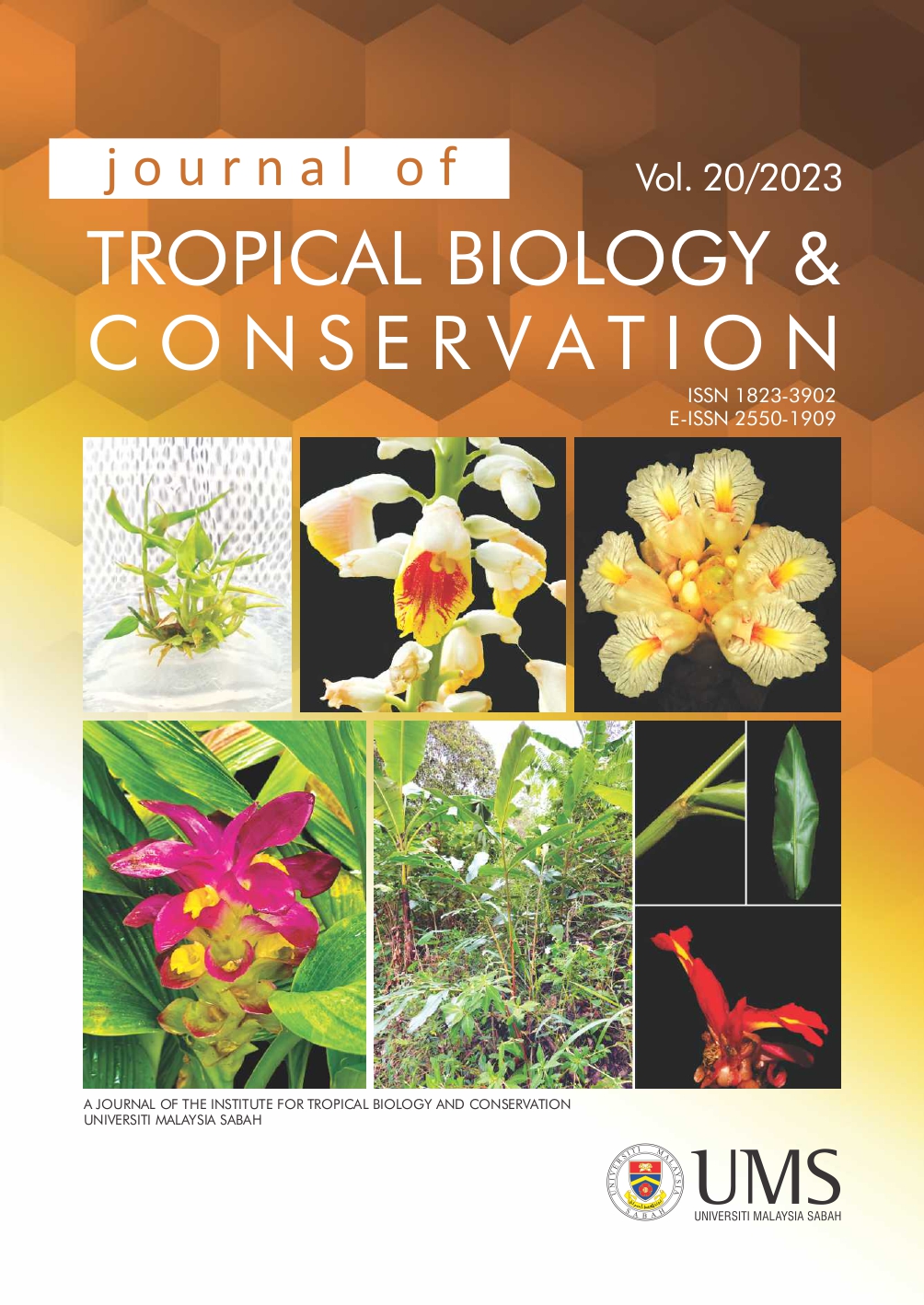Empty Forest Syndrome: Are we there yet? A preliminary Analysis of the Hunting and Poaching Activities in Selected Areas in Sabah, Malaysia.
DOI:
https://doi.org/10.51200/jtbc.v20i.4641Keywords:
Empty Forest Syndrome (EFS), Hunting, Poaching, Community, Bush Meat, Sabah, BorneoAbstract
Hunting poses a longstanding threat to tropical wildlife conservation, now reaching critical levels. In Borneo, Malaysia, around six million animals were hunted yearly in the 1990s, about 36 per sq. km. High demand for game meat, facilitated by improved transportation, drives unsustainable consumption across the tropics. Depletion of animal populations leads hunters to new areas. Roughly 18% of rainforests are protected, yet pressures persist, endangering species due to weak regulations, limited resources, and external threats. This study examines wildlife hunting trends in Sabah, uncovering insights from community interviews regarding hunting impact and resource dependence. A total of 45 people were interviewed in six study areas: Sandakan, Tawau, Kota Belud, Tambunan, Keningau and Tenom. It was found that local communities hunt for food and that hunting is a common way of life for them. Based on the arrests of hunters by the Wildlife Rescue Unit, a report on animal hunting was compiled by the Sabah Wildlife Department and analysed. The most commonly hunted animal is the bearded pig. Parts of bearded pigs were found in the cars of 76.97% of hunters arrested, followed by parts of sambar deer (13.7%). Throughout Sabah, the empty forest syndrome (EFS) is becoming a dangerous silent disaster. While most "simple" forest features are attractive to the eye, they are gradually losing their ecological function. Although this study is not exhaustive, the preliminary findings point to a serious EFS scenario in Sabah if everyone continues to neglect the syndrome and do nothing about it.
Downloads
Published
How to Cite
Issue
Section
License
BY: credit must be given to the creator.
NC: Only noncommercial uses of the work are permitted.
This journal provides open access to its content under CC BY-NC 4.0 on the principle that making research freely available to the public supports greater international collaboration and information exchange.












